There are many types of rock gold ores, each with unique physical and chemical properties, which makes the selection of beneficiation technology crucial. In gold ore processing, it is usually necessary to use gravity separation, amalgamation, flotation, cyanidation and other methods, or a combination of multiple methods, according to the specific properties of the ore to achieve the best gold recovery effect. The following will explore these common beneficiation processes and their applications under different ore conditions.
Use the table of contents below to navigate through the guide:
01Gravity separation for rock gold ore processing
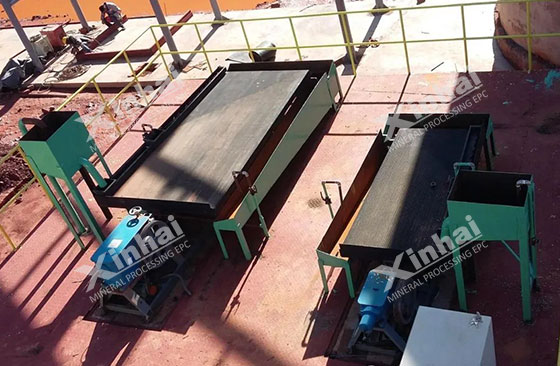
Because the gold particles in the placer gold ore exist in the form of natural gold, the density is greater than 16t/m3, which is much different from the density of the gangue, gravity separation can effectively separate the gold particles. However, single gravity separation technology is rarely used in rock gold ore processing plant, and it needs to be combined with other beneficiation technologies. In the grinding and classification circuit, the combination of jigs, spiral chutes and shaking tables can effectively recover the dissociated coarse-grained monomer gold. This recovery process not only improves the gold recovery rate, but also lays the foundation for subsequent flotation and cyanidation operations, ensuring higher gold extraction efficiency. This comprehensive method is particularly suitable for small gold ore concentrators, which can optimize resource utilization while improving economic benefits.
02Mercury amalgamation for rock gold ore processing
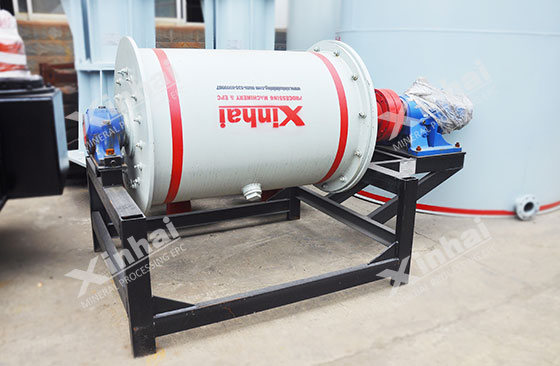
In placer gold mines, mercury amalgamation is widely used to separate gold ores from heavy sand minerals. In rock gold ore processing, the amalgamation method is usually used in conjunction with flotation, gravity separation, cyanidation and other processes. As part of the comprehensive beneficiation process, it is mainly used to capture coarse-grained single gold. This method effectively improves the recovery rate of gold, especially when processing high-grade ores. The combination with other mineral processing technologies can significantly improve the overall mineral processing effect and economic benefits.
The mercury amalgamation method can be divided into internal mercury amalgamation and external mercury amalgamation. Internal mercury amalgamation is carried out in a mercury amalgamation cylinder or a grinding machine, which can better control mercury pollution. The main equipment for external mercury amalgamation is a mercury amalgamation plate.
03Flotation process for rock gold ore processing
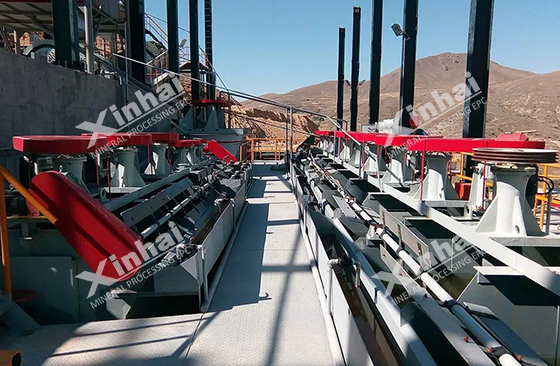
Flotation is one of the main methods used in gold ore processing plants to process rocky gold ores, and is particularly effective in processing gold-containing ores with high floatability in sulfide minerals. The flotation method can enrich gold into sulfide mineral concentrate to the maximum extent, while discarding tailings and reducing mineral processing costs. However, when the flotation method is used to treat certain ores (quartz gold-bearing ores without sulfide or ores with coarse grains and gold particle size greater than 0.2mm), the effect is not very satisfactory. In this case, the flotation efficiency is significantly reduced and the gold ore may not be fully recovered. In addition, the flotation method does not treat these ores well, resulting in a lower recovery rate of gold ores, so other supplementary processes, such as mercury amalgamation or cyanide, are needed to improve the overall beneficiation effect.
04Cyanidation for rock gold ore processing
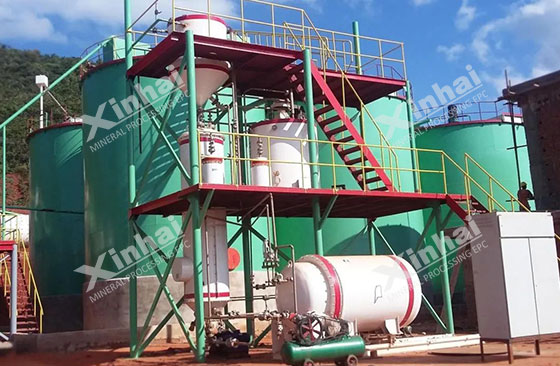
The cyanidation process has the advantages of high recovery rate, strong ore adaptability, and local gold production. It is one of the main methods of gold production. It can be divided into two types: stirring cyanidation and percolation cyanidation.
Stirring cyanidation: mainly used to treat tailings after gravity separation or amalgamation and gold-containing concentrate after flotation.
Percolation cyanidation: mainly used to treat flotation tailings and heap leaching of low-grade gold-containing ores.
05CIP process for rock gold ore processing
The carbon-in-slurry process is a new gold and silver recovery technology improved on the basis of traditional cyanidation leaching and zinc powder replacement methods. The carbon-in-slurry process improves the recovery efficiency of gold and silver by using activated carbon to directly adsorb gold and silver in the leaching solution, and reduces the need for cyanide solution treatment. This method has a high gold and silver recovery rate and low operating cost, and is suitable for treating high-gold and silver ores and improving comprehensive recovery effects.
06Heap leaching for rock gold ore processing
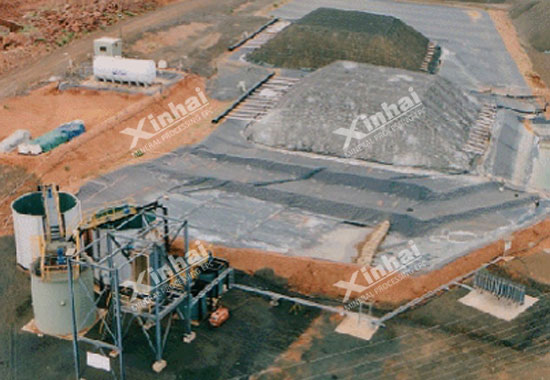
Heap leaching is a process in which mined ore is transported to a pre-prepared stockpile for stacking. After the ore is stacked on waste rock or low-grade ore, the ore pile is sprayed or percolated with cyanide leaching solution to promote the cyanide solution to percolate through the ore layer. During this process, the cyanide leaching solution will be recycled many times, and the gold dissolution will be maximized by repeatedly spraying the ore pile. Finally, the collected leaching solution will be treated by activated carbon adsorption or metal zinc replacement to extract the gold. Heap leaching has the advantages of simple operation and low cost, and is particularly suitable for the treatment of low-grade ores and large-scale ore recovery.
.jpg)
In short, rock gold ore processing method varies due to the diversity of ore types. Various processes such as gravity separation, amalgamation, flotation and cyanidation can be used alone or in combination to achieve the best recovery effect. In actual operation, selecting the appropriate process according to the specific properties of the ore can effectively improve the gold recovery rate, reduce the beneficiation cost, and realize the comprehensive utilization of resources. In the future, with the continuous advancement of beneficiation technology and the improvement of environmental protection requirements, the beneficiation process of rock gold mines will pay more attention to the balance between green environmental protection and efficient production, and provide support for the sustainable development of the mining industry.


 marketing@ytxinhai.com
marketing@ytxinhai.com  0086 13810327080
0086 13810327080 






































































































 CHAT
CHAT MESSAGE
MESSAGE




.jpg)

